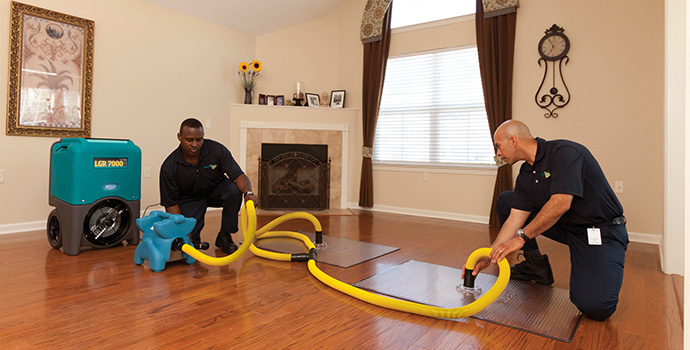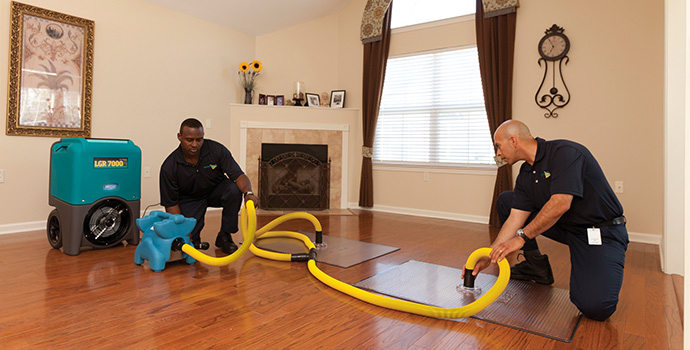Water damage to the home is a serious issue that requires homeowners to take proactive measures and prevent it from spreading or causing additional damage. Regularly inspecting all areas of the property for potential water damage issues is key to preventing them from happening in the first place.
What are causes of water damage?
Water damage can occur from numerous causes, both natural and manmade. Rainstorms and overflowed river banks can lead to indoor flooding. Similarly, flooding can occur when appliances fail or pipes freeze and burst. A compromised roof and high humidity levels can also lead to water damage.
What problems does water damage cause?
Excess moisture in the home can cause a range of structural problems, like wood rot, that make it unsafe to live on the property. Plus, health issues can arise in occupants. Mold growth, for instance, leads to allergic reactions or respiratory issues in the people who live in the home.
Why are regular home inspections necessary?
Water damage can be stealthy, dripping down behind the walls and causing immense damage before the homeowner realizes the extent of it. Due to this reason, it is advisable to regularly inspect the home for potential issues and avert major damages that can be costly to repair.
What do homeowners need to conduct inspections?
Homeowners need tools to help them inspect the home for water damage. The senses—sight, sound, and smell—are reliable tools for seeing, hearing, or smelling water damage. Puddles and discoloration can be seen, dripping water can be heard, and the musty odors of mold can be smelled.
A heavy-duty flashlight is necessary to pinpoint corrosion on water pipes in darkened areas. A digital hygrometer provides a reading of humidity levels inside a room; a high reading indicates unwanted moisture in the home. A moisture sensor detects water under a carpet or floor.
Wet areas behind walls can be discovered by using a thermal-imaging camera. This device senses infrared energy (heat); damp areas are cooler and can indicate the presence of a leak. Using a moisture meter along with the thermal-imaging camera analyzes the moisture content in the wall.
Another helpful high-tech gadget for inspections is the video pipe camera. The tool detects a leak inside a pipe using a fiber-optic cable and miniature camera that transmits images to a video monitor. A mold testing kit tests the quantity of mold spores in a home where mold is confirmed.

ServiceMaster S&R Systems is the most trusted water damage cleanup company in Aurora, Naperville, and Joliet, Illinois.
What are signs of water damage?
Homeowners can use the abovementioned tools to look for water damage, particularly in areas where it is suspected. Seeing water stains is a clear indication of a water leak in the roof or walls. The stains may appear as yellow or brown discolorations on the walls, floors, or ceilings.
Water should not accumulate on interior surfaces, like countertops. But when dampness occurs, it is a sign of a water leak nearby. Hearing dripping noises or sounds of rushing water are indicative of leaking water. Warped wooden floorboards and peeling paint are likewise reliable signs of water damage.
The interior walls can reveal the presence of water damage. Drywall can become soft or spongy to the touch when water damage has occurred. Similarly, warped and sagging walls or those with bulges and waves are likely to have been damaged by excess moisture.
Moisture issues create conditions that are ideal for rapid mold growth. A homeowner who smells the musty odors of mold can be certain that mold colonies have infested the home. As a result of mold, occupants may suddenly experience respiratory health issues triggered by the spores.
Is water damage covered by insurance?
Homeowner’s and renter’s insurance cover different types of water damage, such as those caused by burst pipes, rain, and ice dams. Any type of moisture that comes from the top down, like rain and burst sprinklers, is usually covered by a standard homeowner’s insurance policy.
However, not all types of water damage are covered by insurers. Water that comes from the bottom and moves upward, such as overflowing rivers, is not covered by policies. To obtain coverage for these incidences, it is necessary to purchase a separate policy from the National Flood Insurance Program.
Homeowners living in flood-prone areas are advised to purchase extra flood insurance from the NFIP or a select number of private insurers. Homeowners in general should periodically inspect their home for potential issues and ensure the property is well-maintained to prevent water damage problems.
When carrying out periodic inspections, homeowners must be aware that water damage takes time to become visible. Various materials, environmental conditions, and the extent of water damage can cause it to appear within hours, days, or even longer if the moisture is trapped in the walls or insulation.
Homeowners who catch water damage early are urged to take immediate action. Delaying addressing the water damage issue can cause it to spread and lead to further destruction. Consult the water damage restoration experts at ServiceMaster S&R Systems for prompt and professional attention.
Our IICRC-certified technicians arrive right away to assess the damage, develop a tailored clean-up plan, and begin the water damage restoration process. We remove all standing water and excess moisture using high-tech water extraction equipment as well as powerful dehumidifiers and air movers to thoroughly dry the area.
We go a step further to locate the source of the water damage and repair it. Materials affected by the water damage are restored. If mold growth has occurred, our techs remove it and prevent new colonies from forming. We work with service providers to fix foundation and plumbing issues.
ServiceMaster S&R Systems is the most trusted water damage cleanup company in Aurora, Naperville, and Joliet, Illinois. When your home is affected by water damage, contact us for swift and efficient service. We also assist with insurance claims. Our crews respond to emergencies 24/7. Call today.

